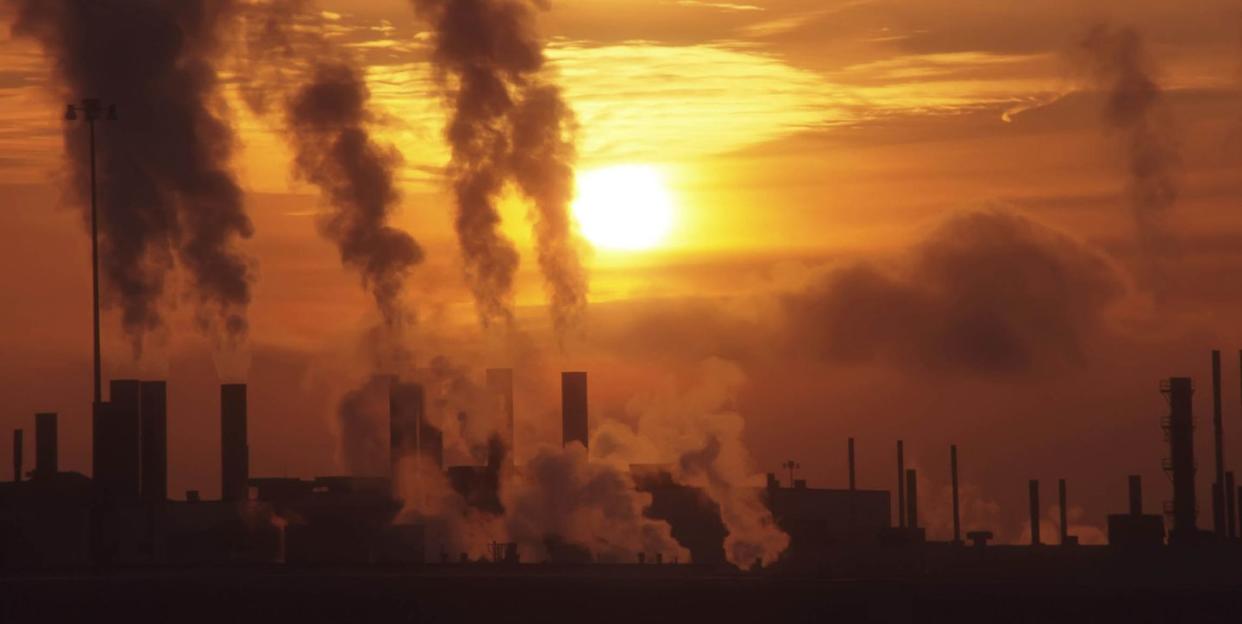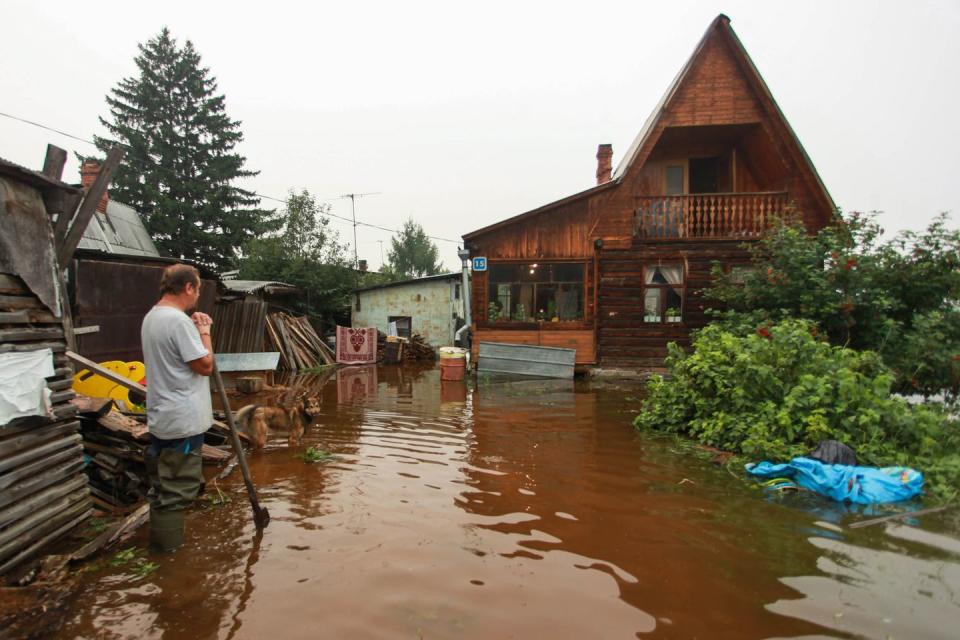Russia Is Full of Environmental Time Bombs. So Is Detroit.

The climate crisis is the titanic, destructive child of a general environmental calamity dating back through all the prosperity and all the entrepreneurial innovation that has occurred since the Industrial Revolution. And the United States is only a part of that global calamity and, arguably, its contribution has been as much as a consumer nation as a nation that produces goods and services. Nevertheless, there are nations in which not even the splinter of conscience present here over the despoiling of the earth exists.
Russia comes immediately to mind—an autocratic kleptocracy with vast natural wealth spread out over a huge chunk of the globe. Right now, Siberia is burning, drowning, and generally eating itself. From The Siberian Times:
A series of natural disasters are hitting Siberia, with the latest a dire threat from severe flooding to Baikal - the oldest and deepest lake in the worth, containing 20% of the planet’s unfrozen freshwater. The alert concerns flooding in Baikalsk - where evacuation has begun - and concerns that toxic mudflows can dump poisonous sludge from a former pulp and paper mill into the lake’s pristine waters. Pools of liquid sludge containing lignin poses a huge threat to the life in Baikal with warnings of an ‘ecological catastrophe’. ‘We can only pray now,” said one campaigner pointing to a risk of a dam burst on the Solzana River where a bride had been swept away already.
Twenty percent of the planet's unfrozen freshwater. Now d/b/a a poisonous, bottomless cauldron.
While Baikal Pulp and Paper Mill, a Soviet-era production facility seen as an ecological threat to the lake, is now closed, the risk of pollution from untreated waste storages at the site is acute, say reports. The last devastating Baikal mudflow was in July 1971 which washed 20 kilometres of the Trans-Siberian Railway into the lake and destroyed several sections of the road from Irkutsk to Ulan-Ude. The railway could again be threatened. Elsewhere, some 2,000 have been evacuated in major flooding in Amur region in the Russian Far East. There are fears of a repeat of the massive destruction of 2013.

The departed USSR was not extraordinarily mindful of environmental protections. It left thousands of these environmental time bombs all over the landscape. In 1971, a complete environmental collapse around Baikal was narrowly averted. This time, maybe not. From AGU:
The potential consequences of such an event entering the highest waste storage pond should be clear – indeed, based on the image above the likelihood of a very large debris flow breaching the first waste pond looks to be very high indeed. This pond would probably fail, inundating the next one downslope, and so on. Thus, it is entirely feasible that seven or more storage facilities could fail, releasing the waste into the lake. Of course, the three ponds to the east are also vulnerable. The 13 waste storage ponds are reported to store about 6.2 million tons of waste in total. It is difficult to ascertain the true level of threat at this site, but it must be considered to be very high. The worst case scenario is the one that I have outlined above, but of course pollution could also be released by the failure of the retaining structures at any of the 13 ponds.
This is not a subject for American chest-thumping. We have places like this, and not buried in the wilderness, either. People live there, primarily people of color, which adds another entire level of traditional societal complicity made up mostly of racism and poverty, all tangled up in that uniquely American way.

On Monday morning, Jay Inslee, the governor of Washington and a candidate for the Democratic nomination for president, paid a visit to what he called Michigan's most polluted zip code, the 48217. For nearly a decade, that neighborhood in southwest Detroit has held that dubious distinction, which was first bestowed upon it by environmental researchers from the University of Michigan. From the Detroit Journalism Collective:
There are over 150 sites in southwest Detroit releasing chemicals and particles which result in air pollution. These sites emit dangerous chemicals and particles such as PM2.5, sulfur dioxide, nitrous oxide and ozone. Zip codes 48217 and 48209 are home to the highest levels of greenhouse gas emissions in the city of Detroit. Moreover, the areas in Detroit with the highest concentration of PM2.5 are also the areas with the highest Latino population. The air pollution in southwest Detroit causes numerous health issues for residents of the community including respiratory diseases, cardiovascular problems, kidney failure and cancer. Asthma hospitalization rates in southwest Detroit and surrounding areas are nearly triple the state average; cancer rates are also higher than average.
Another school in southwest Detroit, Harms Elementary, faces similar issues regarding pollution, according to Community Schools Coordinator Ana Martinez. “There are so many factories near Harms, there is so much trash on the streets and there are so many nearby houses deteriorating,” Martinez said. Adding that the fact that the government is aware of the issues prevalent in southwest Detroit and is yet unwilling to take action in the area is very frustrating. She said she cannot come to terms with seeing the major developments taking place in midtown and downtown, while southwest Detroit – a community she has been a part of for 25 years – continues to deal with very serious problems.
So Inslee, who's running what is probably the most environmentally conscious Democratic primary campaign since Mo Udall's in 1976, went to the 48217 to pitch his plan for a Community Climate Justice initiative. From the Detroit News:
The proposal calls for "Equity Impact Mapping" to track environmental health disparities and confront racial and environmental injustice in the country's "front-line communities." It also seeks to establish an Office of Environmental Justice within the U.S. Department of Justice to crack down on corporate polluters and a White House Council on Environmental Justice to center federal policy on equity and inclusion. Inslee's "Building a Just Future" plan would guarantee at least 40% of federal investments building a clean energy economy would go to communities facing the greatest burdens of pollution, income inequities and climate impacts. The investment would be at least $1.2 trillon of the $3 trillion in federal investments called for in Inslee's previously announced Evergreen Economy Plan.
This is a plan that accepts as axiomatic the proposition that environmental neglect generally has led governments and their people to neglect the gigantic environmental crisis that is upon us with the climate crisis. Sites like the ones around Lake Baikal and the ones salted into the neighborhoods of the 48217 are the land mines. The climate is the carpet bombing. We have been at war with the planet and the planet is kicking our ass for us.
Respond to this post on the Esquire Politics Facebook page here.
You Might Also Like

